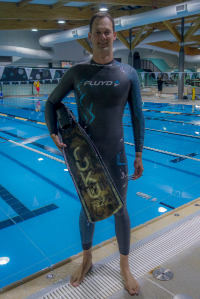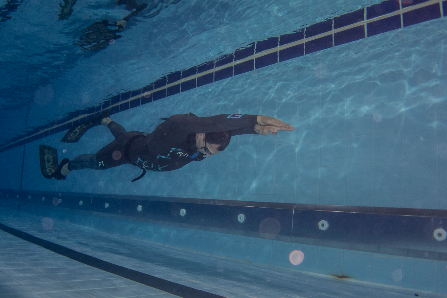Hi,
You're receiving this email because {name} thinks the Ruku Blades Tim Li Crayfish would interest you.
Tim Li is an artist based in Wellington who is producing a series of illustrations which capture the natural beauty of marine fauna in New Zealand. Tim is a keen freediver and underwater enthusiastic who is bridging the gap between fine art and icthyology, producing a contemporary collection of artworks which provide an accurate visual representation of our favorite recreational fish species. Working with graphite pencils and an extensive bank of reference images, he records intriguing levels of detail, texture and visual information. Tim’s drawings are often at a 1:1 scale but he prefers to work at larger, unrealistic scales to amplify our appreciation and respect towards the incredible natural resource we have available on our doorstep.
Ruku is proud to work with Tim and put a series of Ruku blades featuring his work.
Pockets that fit Ruku'sRuku Blades will fit most pockets, Picasso, Mares, Seatec, Omer Millenium Pathos
The following pockets require Ruku to modify the blade at manufacturing, which can lead to a delay in delivery.
Omer Stingray,
Pathos if you require the Rukus to be glued into Pathos pockets this will cost $60
Ruku’s are a handmade composite blade, and proudly New Zealand made. The Blades come with a 3 year warranty
Selecting a BladeRuku Blades now have a broader range of uses. When selecting your blade most importantly you need to consider your body weight, any injuries including ankles and legs. If you are unsure please call us for help on 09-3770-896
Ruku Model Intended User
X Soft Under 60kg
Soft 60kg -75kg
Medium 75kg -95kg Spearfishing,Scuba
Medium 75kg - 85kg Commercial use (Kina, Paua)
Hard 95kg + Spearfishing, Scuba more fitter and heavier diver
Hard 85kg+ Commercial use (Kina, Paua’s) see commercial blade
Please note if you have injuries, it would be advisable to drop a model down..injuries especially ankle and knee can create fatigue which will result in poor performance in your technique. If you are unsure please ask our team 09-3770896
Testimonial from Dave MullinsDave Mullins is New Zealand’s deepest diver, he holds 17 national records and six freediving world records. To add to his accolades he holds a world record for a striped marlin which weighed 156.6kg’s
Up until a couple of years ago I swam with flat plastic fins. These performed well enough underwater but the lack of angle was starting to injure my ankles, particularly in competitions that involved lots of surface swimming.
In freediving I use very high angle monofins to reduce knee angle, both when kicking and when in the glide phase of the dive. After looking at the local options I bought a pair of Ruku's because the blades were angled well and they are made in New Zealand. I’ve always felt that the angle, length and flexural characteristics of a fin are far more important than the material used. Carbon fibre is lighter than glass but ultimately I haven’t been able to find much difference between the materials in real performance terms.
My first Rukus were Medium stiffness and while they felt good on the surface, they seemed a bit too long and had a tendency to fold in the middle under power. This wasn’t an issue on shallow dives but showed up when I went deeper, especially in Wellington conditions with a thick suit and lots of weight. It felt like they reached a point where the fin tips couldn’t keep up and ended up trailing behind the rest of the blade rather than actively pushing water. Changing to a pair of slightly shorter and much stiffer Commercial blades fixed the power issue but the trade-off was a hard slog when swimming long distances. The blades were really built to sprint and carry heavy loads.
When I spoke to Ruku I was told a redesign was on the way and after I gave some feedback we decided to experiment with a couple of variations. The aim was to keep the fins fairly soft but able to perform on surface sprints and deep dives without folding. It was an interesting exercise as a re-design of the internal structure yielded some fins that looked nearly identical to the previous model but behaved quite differently. The version with slightly reduced length and a steeper taper built into the laminate clearly outperformed both the originals and the much shorter comparison blades. They seemed to be effective across a wider range of speed and power, settling into a nice ‘jogging’ pace on the surface but still keeping up with harder kicking on sprints and deep ascents.
To be fair I had given Ruku a pretty tough brief after using my original Rukus since I weigh 100kg, operate mostly in cold water, favour soft fins and enjoy deep diving. This awkward combination of preferences and constraints probably meant that I ran up against equipment limits many divers just wouldn’t notice. I imagine it would be quite easy to slap together some tapered fibreglass sheets and churn out moderately functional fin blades that satisfy enough of the spearo population to stay commercially viable. It’s a lot more difficult to produce something that holds up in a more demanding freediving context and Ruku’s approach to continual improvement has been very rewarding.
The new blades should satisfy anybody looking for a good balance between surface swimming and depth performance, even at the serious end of recreational diving.
Dave Mullins


For more information, please click
Here
Regards,
